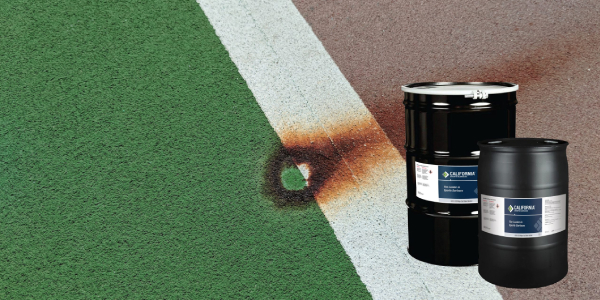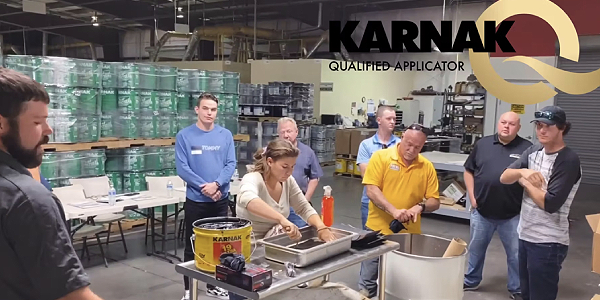UP TO THE MINUTE
Not all sealants are created equal

By KARNAK Corp.
Understand the unique properties of silicone sealants and why they are the go-to sealant for your roof repair needs.
As silicone-coated roof systems gain momentum in the industry, it is important to understand their maintenance needs over time. It’s also critical to understand which sealants are compatible with the existing coating system. At KARNAK, we believe and endorse the use of silicone sealant only to ensure full compatibility over silicone-coated roofs. Other sealants in the industry do not properly adhere to silicone, driving the need for silicone sealants in the market.
Silicone sealant has many unique properties making it advantageous to use. One is its ability to bond to several different roof substrates, most importantly: silicone coated roofs. Another is its ability to resist ponding water. Other benefits of silicone sealant include high elongation, long-term durability, and resistance to UV degradation. This means the sealant will not chalk from exposure and is resistant to ozone, aging, weather and extreme temperatures. Not many sealants can claim these attributes.
Understand the effects of using silicone sealant
Because of its high-performance characteristics, Silicone sealant may seem like the ‘go-to’ repair product for use on all roofs, but it does have some drawbacks. The major one is using silicone sealant on non-silicone coated roofs limits the type of coating that may be applied over that roof in the future. This is because if a silicone sealant has been used for repairs, only silicone will adhere on top of it. This limits the building owner’s options for other coating technologies, unless the silicone sealant is removed first. This situation may or may not be advantageous to the building owner and their roof maintenance budget.
Silicone sealant offers good, cured film physical properties, with most industry leading products having between 200% and 500% elongation, and 120 psi to 260 psi tensile strength. However, there are non-silicone sealants in the market such as SEBS thermoplastic rubber, acrylic, urethane and SBS modified asphalt with better properties and similar advantages that allow other coating chemistries to be applied over top so building owners are not limited in their options. There is a case for using all of these except when the roof is already silicone coated.
Silicone sealant use
Prior to the application of silicone sealant, all surfaces should be dry, clean and free from dirt, dust, rust, chalky residue, oil, grease and other foreign matter. Perform an adhesion test if unsure of an application. Wiping silicone coated substrates first with a fast-evaporating solvent such as denatured alcohol may improve adhesion. Damp surfaces may be temporarily sealed but all standing water should be removed first.
KARNAK’S 671 Karna-Seal silicone sealant
When repair and maintenance are needed on an existing silicone coated roof, 671 Karna-Seal is the product of choice! 671 Karna-Seal is a single-component, moisture curing, 100% silicone roof sealant that offers excellent UV resistance, flexibility, and tensile strength that resists weathering, hardening, chalking, and cracking. 671 Karna-Seal is intended to be used to repair roof substrates previously coated with 670HS Karna-Sil Ultra silicone or other silicone coating. 671 Karna-Seal also offers excellent adhesion to modified bitumen membranes, metal, *aged single-ply membranes (TPO & PVC ), EPDM, Spray Polyurethane Foam and concrete.
Features, benefits and advantages:
- Resists permanent ponding water
- Application by brush
- Bonds to several different roof substrates
- Low VOC, low odor
- For horizontal and vertical use, will not sag
- Rain safe in one hour
- Ready to use, no mixing of components
- UV stable, may be left exposed
- Excellent weather resistance & durability
*Note: TPO and PVC membranes should at least be 4 years old before using this product.
Original article source: KARNAK Corp
Learn more about KARNAK Reflective Coatings, Sealants and Cements in their Coffee Shop Directory or visit www.karnakcorp.com.
Recommended For You

Winning the game against rust
Read More ...
The right temperature makes all the difference
Read More ...
Rewarding excellence
Read More ...














Comments
Leave a Reply
Have an account? Login to leave a comment!
Sign In